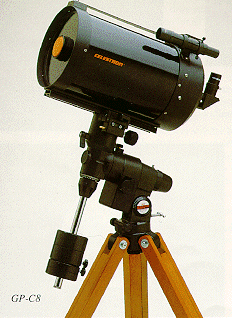Celestron Super C8 Manual
I purchased a classic (orange tube) for use as both a and a small 'grab and go' telescope (below photos). My C90 arrived with a loose part inside the requiring some repair. I contacted Celestron to ask a few questions about the threading on the optical back, and found out that the manufacturer could no longer answer these questions. Since repair information and step-by-step maintenance instructions seemed difficult to find on this 30+ year old telescope, I decided to create this webpage to consolidate the information I found. Hopefully this will be of interest to other classic owners. Included is basic information on the C90, where to find manuals and replacement parts, and details about the maintenance and repair I have performed on my C90. Due to recent instances of my equipment photos being posted without my permission on (used in adds for C8's, C90's, and SCT accessories), I have had to watermark my equipment photos.

The C90 was launched in 1978 and is a 90 mm f/11 optical system (details of the C90 Maksutov-Cassegrain optical system can be found on my webpage). The C90 was available in three versions: the spotting scope (pictured below), the single arm mounted astro version, and as a black telephoto lens. The C90 optical system was identical in all three versions. The C90 was sold with a 5x24 finderscope, a 0.96' optical back, and came with 18mm and 30mm Kellner eyepieces. The C90 optical tube is very compact (5'diameter x 8' long) and weights about 3 lbs. The C90 is focused by turning the black focusing ring attached to the orange tube; this screws the orange tube forward or backward, changing the distance between the and. The following sections document the maintenance and repair I have performed on my C90.
Owners manual for Super C8 Plus or help figuring how to use - posted in Mounts: Hello, i just acquired a Super C8 Plus modified by Mr Tuthill. It has a polar finder. Aug 20, 2017 Celestron Super C8 + questions for. Regardless of if the scope is a basic orange-tube or from that first batch of orange Super C8s, the Super C8 Plus manual doesn.

There is always a risk of damage with any home repair and maintainance of optical equipment. It is always recommended to contact the manufacturer prior to performing any maintenance as this may void warranties and alter equipment performance. I assume no responsibility or liability for any damages resulting from what you may do to your own equipment. Anything you do is at your own risk, so be sure you know what you are doing and accept all risks prior to beginning.
Opening the C90 Optical Tube. In order to open the C90 optical tube, remove the adapter foot (spotting scope model). Turn the C90 over and remove the two screws on the adapter foot (below left photo). Punjab University Engineering Programs 2013. Underneath the adapter foot are two retaining screws (below right photo). These retaining screws limit the motion of the front optics and prevent the orange tube from being totally unscrewed and falling off, or advanced too far into the primary mirror. Next remove the retaining screw nearest to the front optics. The retaining screw nearest to the primary mirror is slightly longer than the other screw and can be left in place.
Havre De Grace Patch. If the large focus ring becomes difficult to turn, it may require cleaning and lubrication. Celestron's website previously gave instructions for lubricating the screw joint with Mobil 1 grease (unfortunately this document is no longer available from Celestron's archives). I purchased a synthetic grease called Super Lube®, which contains Teflon, and used this instead of Mobile 1 grease.
I opened the C90 as described in the previous section, but left the rear retaining screw in place. I removed the old grease from the screw threads, added a light coating of Super Lube ®, screwed the OTA completely together, and then separated the parts. I removed any grease clumps, added more grease as necessary, and repeated the process until all screw surfaces were evenly coated with grease.
I avoided adding too much grease, as this could clump and fall inside the OTA. It's better to add small amounts of grease until you get the proper coverage instead of over coating and having clumps of grease form inside the OTA. The below left photo shows the threading on the mirror cell after grease application-note that the entire threaded surface is thinly coated with grease (without clumping). Oldest Person To Compete In Olympic Games. The below left photo also shows the retaining screw that prevents the orange OTA from being advanced into the primary mirror (leave this in place). The below right photo shows the lubricated OTA sections, ready for reassembly.